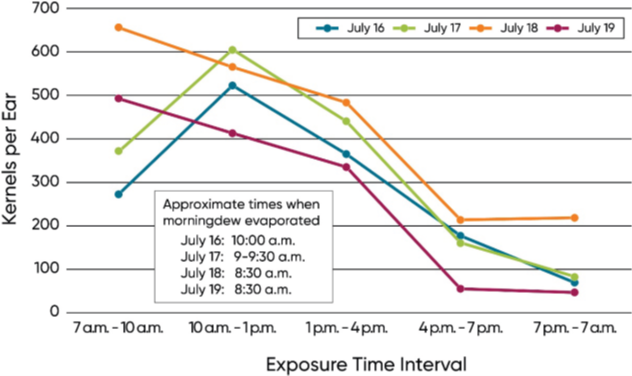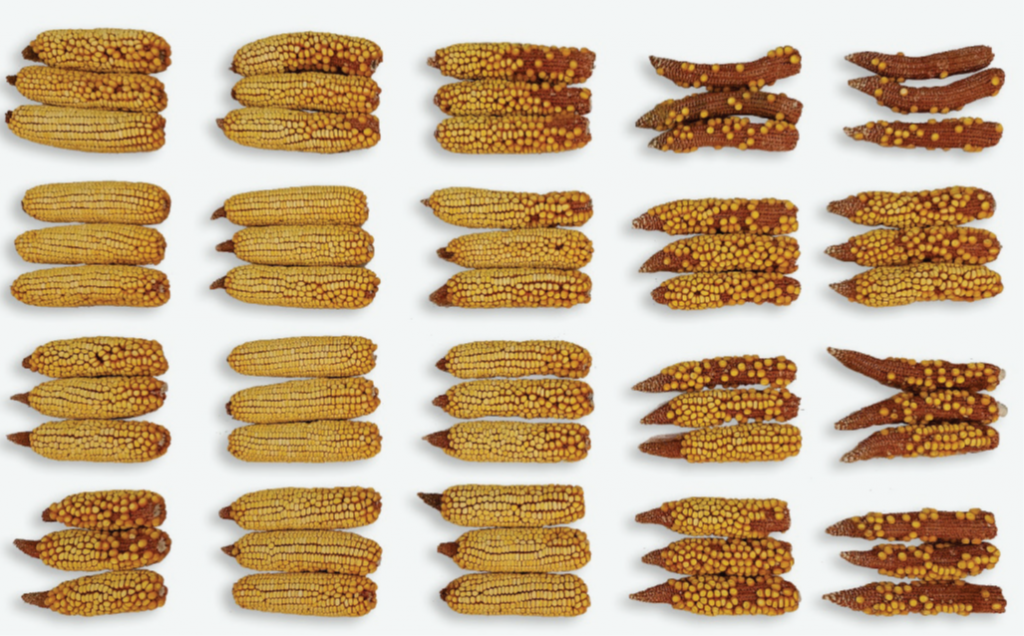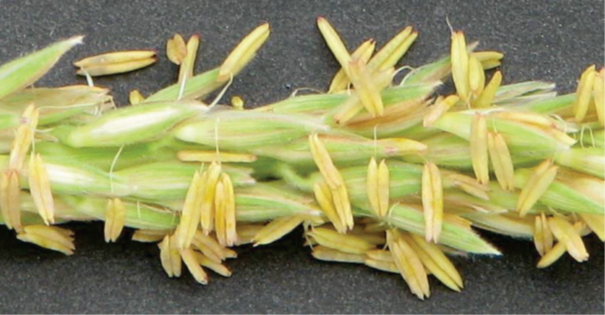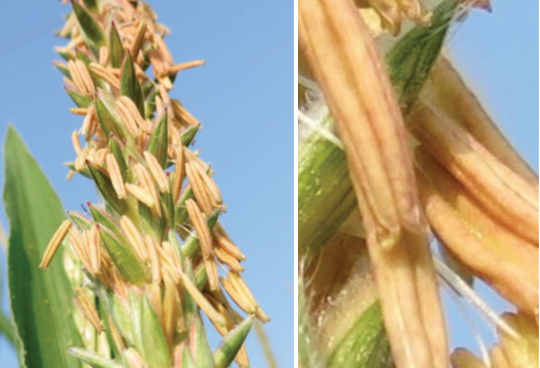In this article, everything the farmer needs to know about pollen shedding is looked at in detail: what is it, how is it characterised and when does it take place?
Key findings
• Pollen shedding peaks just after the early morning dew disappears and gets less throughout the day.
• Pollen grains reach maturity and are released as pollen packets open.
• If pollen packets are dry, they open shortly after pollen grains mature.
• If pollen grains have already reached maturity but the pollen packets are moist, pollen shedding will not occur before the packets dry out.

Figure 2: Kernels per head with beard exposure to pollination at different times of day.
Pollen shedding in maize
• Pollen shedding in maize takes place over a period of several days, but varies over the course of a day.
• Observations over the years indicate that pollen shedding typically begins after the dew evaporates, peaks during the morning, and decreases as the day progresses (Nielsen, 2018).
• A field study was conducted in 2021 to observe how the intensity of pollen deposition changes throughout the day by observing the pollination process.
Study description
• Heads of a Pioneer® brand maize are covered until beard emergence.
• The beard of selected heads was exposed to pollen for a short period and then covered again after this short period of exposure.
• Intervals of exposure were from 07:00 to 10:00, 10:00 to 13:00, 13:00 to 16:00, 16:00 to 19:00 and from 19:00 to 07:00 the next morning.
• The study was conducted for four consecutive days. The second, third, fourth and fifth day the trial was at 50% beard emergence, and the first, second, third and fourth day the trial was at 50% pollen shedding.
• Selected heads were collected by hand after drying and the kernels were counted. There were six replicates of each treatment timing for each day.
07:00 – 10:00 10:00 – 13:00 13:00 – 16:00 16:00 – 19:00 19:00 – 07:00

Figure 3: Representative heads showing the results of pollen shedding at specific time intervals.
Field conditions and observations
• The trial was under very little stress with pollination. The field received 50 mm of rain two days before pollination began.
• During the first week of pollination it was sunny with an average maximum temperature of 32 °C.
• The dew evaporated around 10:00 on day one, 9:30 on day two and at 8:30 on day three and day four.
• Good pollen shedding was evident, and the beard grew rapidly during the first two days of the study.
• Pollen shedding appeared to be less on the third day.
• On the fourth day, pollen shedding decreased and the rate of beard elongation also decreased.
Results
• Clear variation with kernel filling was noted where the beard had exposure to pollen during a certain time of day (Figure 2).
• Peak time for optimum pollination was shortly after the morning dew had dried.
• On day one and day two, the dew dried off by 07:00 and 10:00. Most efficient pollination was recorded during the two days with a beard appearance from 10:00 to 13:00.
• On day three and day four, the dew dried well inside the window from 07:00 to 10:00. On both days, maximum pollination occurred with beard emergence between 07:00 and 10:00.
• For all four days, pollination efficiency peaked just after the early-morning dew disappeared, then decreased as the day progressed (Figure 3).
• Total pollination determined throughout the day was consistent with observed pollen shedding on the land. Pollen shedding appears to be good during day one and day two. It started to decrease on day three and was significantly lower on day four.
• Total kernel filling with pollen shedding on days one, two and three was good, while kernel filling with pollen shedding on day four decreased.
• According to Nielsen (2018), maximum pollen shedding occurs on the second day of the pollination period and progressively decreases daily.
• These field results for pollination are consistent with the pollination information published by Nielsen (2018).

Figure 4: Pollen packets.
Summary
• Pollen shedding has two stages: First, pollen grains mature within the pollen packets. Second, pollen packets open to release pollen.
• Although pollen grains enter maturity during the night, few pollen grains will be released during the night because dew keeps the pollen packets too moist to open for pollen shedding.
• Moist pollen packets hold the pollen inside and then release pollen once the morning dew evaporates.
• The release of these stored pollen grains creates the opportunity for maximum pollen shedding during the morning after the dew evaporates.
References
Nielsen, R.L. 2020. Tassel Emergence & Pollen Shed. Corny News Network. Purdue University. https://www.agry.purdue.edu/ext/corn/news/timeless/Tassels.html
For more information about Pioneer, send an e-mail to info.rsa@pioneer.com or go to www.pioneer.com/za









